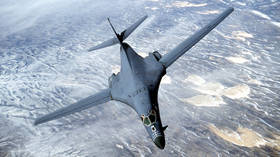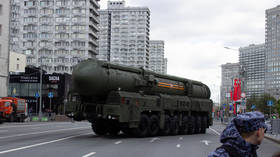US adjusting nuclear deterrence strategy – Pentagon

The US will adjust its nuclear deterrence strategy to meet potential threats from Russia and China, according to a Pentagon report.
In a statement on Thursday, the Department of Defense said that “multiple nuclear peer adversaries challenge the US and its allies’ and partners’ security,” adding that those countries are growing and modernizing their nuclear arsenals.
In light of this, Richard Johnson, deputy assistant secretary of defense, singled out Russia and China, and noted that the US may need to adjust its 2022 Nuclear Posture Review to maintain nuclear deterrence. He noted, however, that current nuclear modernization effort may not be enough.
According to Johnson, to address those concerns, the Pentagon “has already taken steps to field capabilities to enhance nuclear deterrence and flexibility.” The key elements include the development of the B61-13 gravity bomb, and increased readiness of nuclear-armed and powered Ohio-class submarines.
The Pentagon announced the development of a new variant of the B61 bomb last October, saying that it would replace some of the older versions and provide the US with “additional options against certain harder and large-area military targets.” Meanwhile, Washington stressed that fielding the B61-13 “is not in response to any specific current event” and would not increase the overall nuclear stockpile.
The Ohio-class submarines are the key element of the US nuclear triad and are specifically designed for nuclear deterrence. They can be armed with Trident missiles with a range of up to 12,000 km.
Johnson’s comments come after Russian President Vladimir Putin ordered a change in the nation’s nuclear doctrine in late September. The document was amended to stipulate that “an aggression against the Russian Federation and/or its allies of any non-nuclear state with the participation or support of a nuclear state will be regarded as their joint attack.”
Putin approved the changes on November 19 as the US and several Western nations allowed Ukraine to use foreign-made long-range weapons for strikes deep into Russia, despite Moscow’s warning that this would escalate the conflict and result in NATO’s direct participation in the hostilities.
Earlier this week, Russia carried out a strike on Ukraine using the latest Oreshnik medium-range hypersonic missile, saying it was in response to Kiev’s cross-border attacks using US-made ATACMS and HIMARS systems, as well as British-made Storm Shadow missiles.













